
Visit Continental Tires in your country for local vehicle fitment
#Classic
Through time with grip
A motorsport story
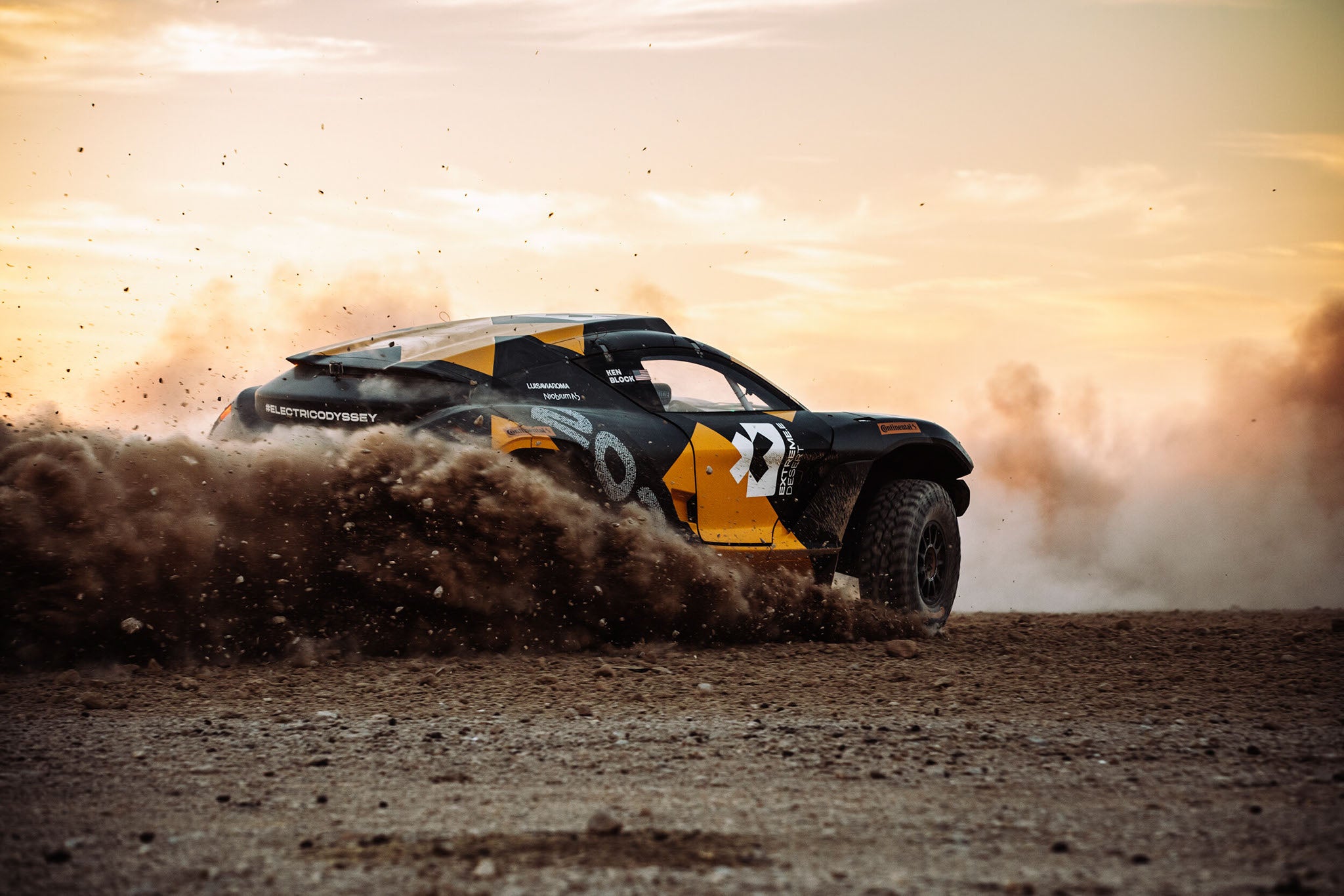
As one of the world’s largest tire manufacturers, Continental has been working on the development of robust and reliable tires for over 120 years. Motorsports in all its facets was and still is an important driving force. When solid rubber tires were state-of-the-art, Continental’s R&D departments set about inventing pneumatic tires. As fans cheered on daring men, Continental equipped women with material and focused on their racing achievements. The Extreme-E racing series takes Continental´s flair for materials and technologies of the future to the next level.
Recognizing future technologies and enabling progress
Innovations are the basis for progress. In the second half of the 19th century, rubber was one of the promising materials whose potential was recognized by the “Continental-Caoutchouc und Gutta-Percha Compagnie.” There are many years of experimentation before pneumatic tires can finally be produced, instead of solid rubber tires, at the turn of the century. “We can see a real start-up mentality here,” says the head of the corporate archives, Dr. Nils Fehlhaber. “Rubber came to Conti as the material of the future, and the possibilities were explored more and more.” In 1898, revolutionary, cutting-edge technology leaves the factory in the form of the first “pneumatic automobile tire.” This marks a milestone that is linked to a vision – the conviction that mobility will change fundamentally.
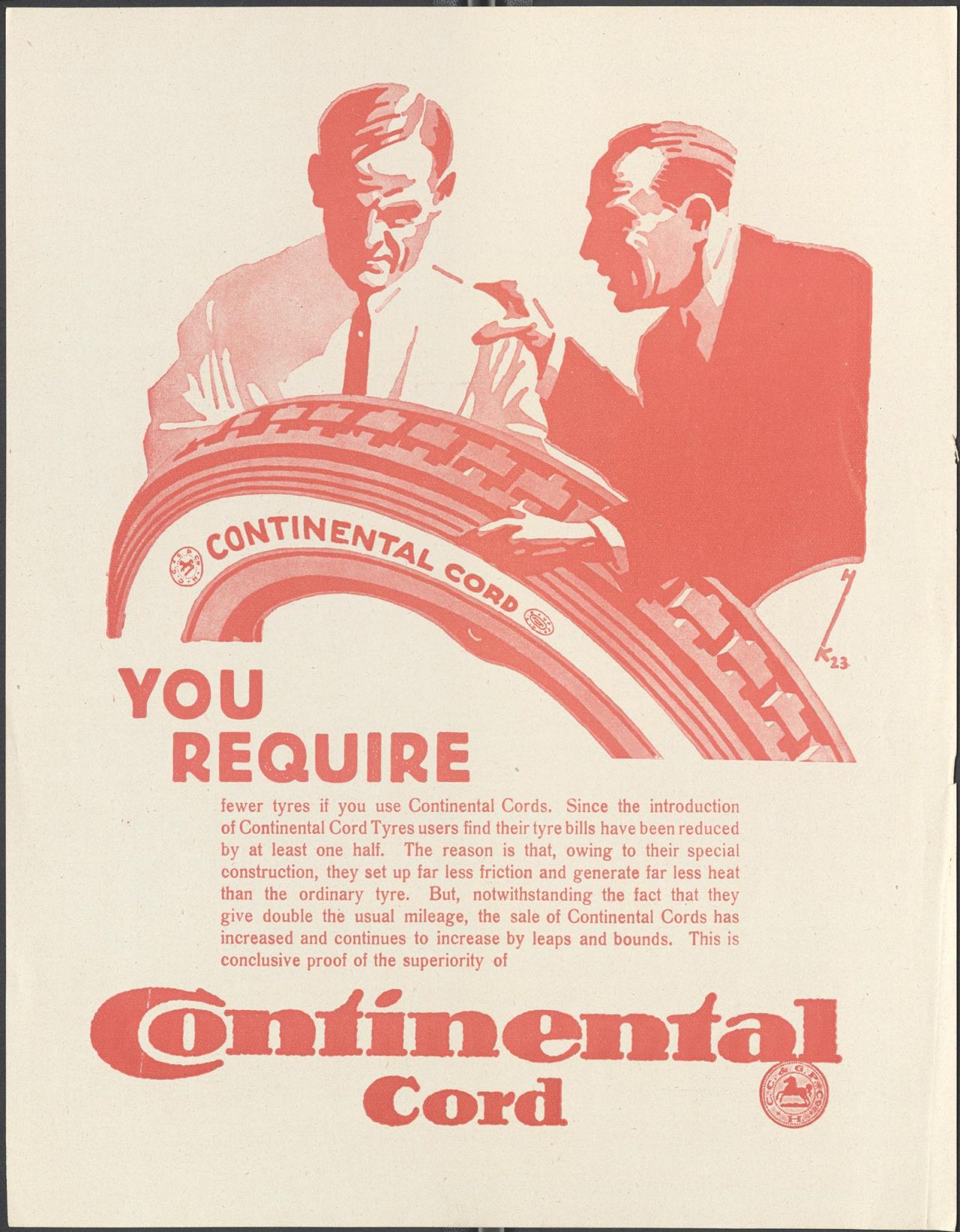 Advertising Continental Cord tires began early
Advertising Continental Cord tires began early
In 1900, this was not foreseeable; the horse-drawn carriage still dominated. At that time, just 800 automobiles were being manufactured in the German Empire – by hand.
Euphoria around technology - and a spirit of optimism
Automobiles are something for people who are enthusiastic about the groundbreaking developments of the turn of the century, people for whom technology is synonymous with the future and new possibilities. At the beginning of the 20th century, this was understood to mean the “roaring feeling of being unfettered and free,” as the writer Otto Julius Bierbaum described it in 1903. Whereas the train helped humans conquer distance and the bicycle helped us explore proximity, the automobile was a symbol of freedom and independence.
Aside from the drive, a continuity can be discerned. Even today, Continental’s commitment to mobility is forward-looking. “Then, as now, a future-oriented approach was encouraged,” notes historian Fehlhaber. “In the 1890s, it was not clear that the car was the mobility provider of the future.” The parallel to today: “Until recently, sustainably oriented mobility was also more of a topic for technology enthusiasts,” Fehlhaber continues. For this very reason, it is only logical that Continental is a founding partner of the Extreme E racing series.
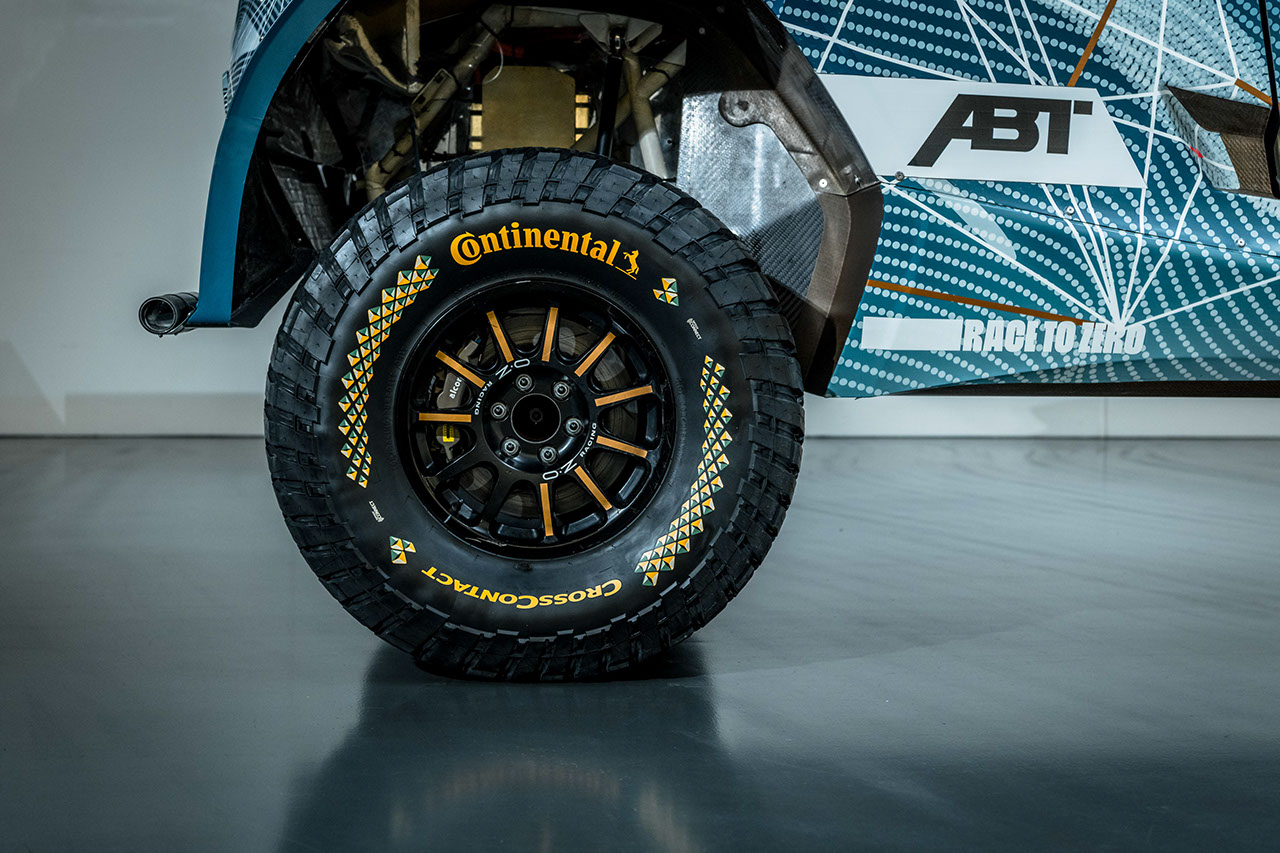 Sideview of the Extreme E Race tire on display
Sideview of the Extreme E Race tire on display
Automobile racing as a gateway
In 1894, in France, the first car race in history begins. Enthusiasm for city-to-city racing quickly spreads. Drivers and equipment brave poor road conditions and foul weather. The races prove that the “horseless carriage” is a reliable mobility alternative. People are amazed. Today, fans continue to marvel at the Extreme E racing series for all-electric SUVs. “This is off-road racing, with all its vagaries and pitfalls,” says Catarina Silva, who is part of the tour as head of the Continental product management team.
Extreme E heralds a new era of motorsports. Besides of finishing times and rankings, it’s essentially about electrification, the environment and equality – each team has a male driver and a female driver. Winning a stage is nice, but what’s more important are the lessons that can be learned for series production – especially with a focus on sustainability. “We work closely with R&D and materials development, defining new approaches and possibilities and permanently trying to improve our recycling solutions.”
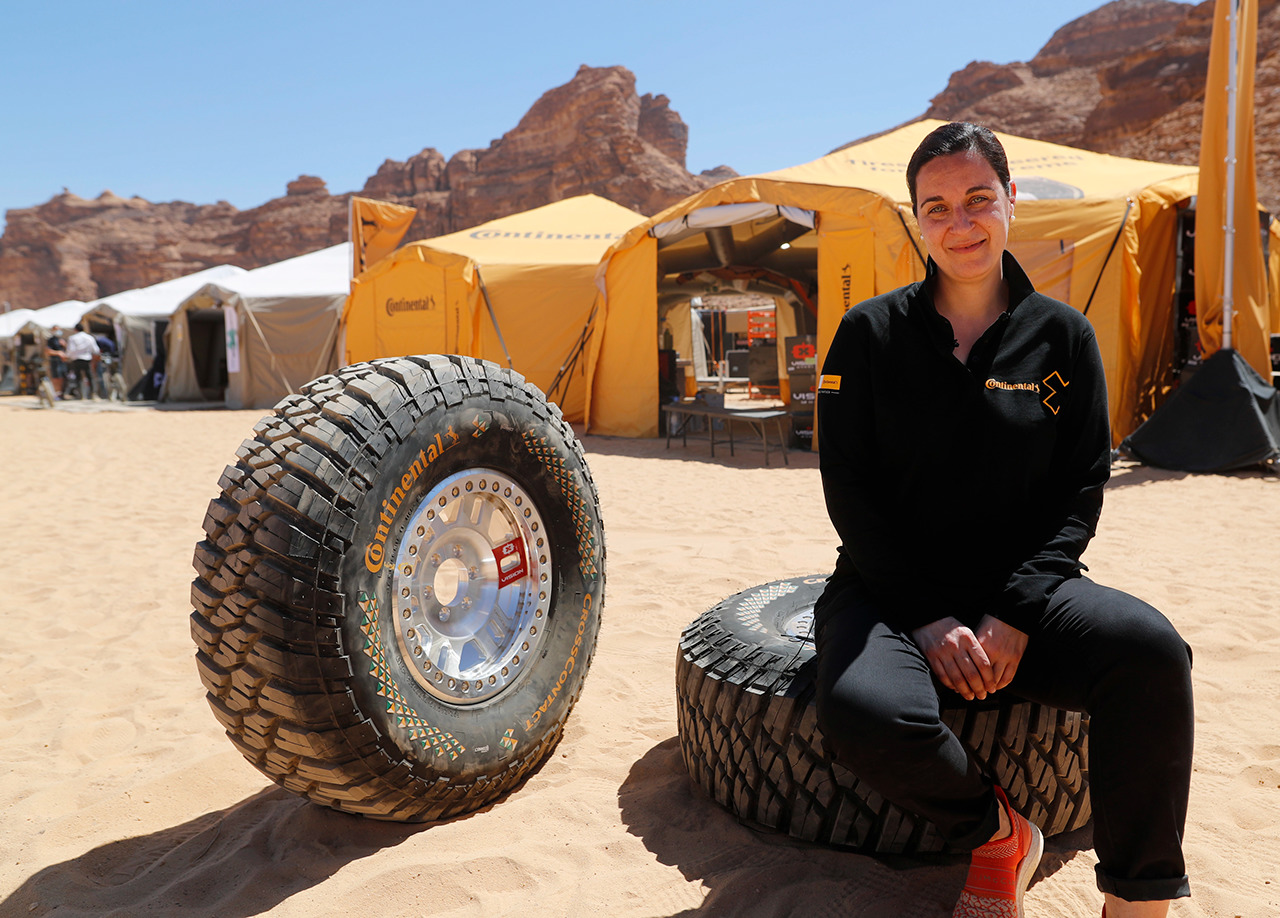 Catarina Silva sitting with Continental Extreme E race tires at the first race location: AlUla, Saudi Arabia
Catarina Silva sitting with Continental Extreme E race tires at the first race location: AlUla, Saudi Arabia
We work closely with R&D and materials development, defining new approaches and possibilities and permanently trying to improve our recycling solutions.
Catarina Silva, Head of Product Management at Continental
Harnessing enthusiasm for new ideas
The beginnings of automotive sports are slightly offset in time from the cycling boom. From 1896 onward, cycling races were Olympic events, and systematic sponsorship developed, with this message: cycling is cool, the bikes are fast, and if you want to keep up, you also have to pay attention to the accessories – i.e., tires, gears and brakes. “Continental was a pioneer in cycling.
In 1892, Continental was the first German company to launch pneumatic tires for bicycles, and it specifically entered the races with banner advertising and sponsorship to popularize the product. The good experience gained here was transferred to automobile racing,” explains Fehlhaber. So, early on, banner ads with the words “Continental Tires” can be seen at car races, and magazines featured full-page ads for car and bicycle tires of the “Continental Pneumatic” brand, featuring a racing car in front of a stylized Alpine backdrop. Postcards celebrate victory races that were run “without a single tire defect.” One highlight of Continental’s involvement in conventional motorsports, visible from afar, is the Continental towers on the pit lane of the German racetracks in Nürburgring and Hockenheimring in the middle of the 20th century.
The network is more important than individualism
Today, fans are part of the Extreme E racing series via current formats such as livestreams or social media. They learn more about the spirit of the sport in a 360-degree view than was ever possible before. Or, they experience the impact of climate change together with the teams.
They also experience how important cohesion is. “For sustainability reasons, we are on site with a very small service team and serve as the first point of contact for all nine teams in all matters relating to tires,” says Catarina Silva. “This pulling together, that was also there at the beginning of the commitment to racing,” says Fehlhaber, putting it into context. “Even in the early days, there was a focus on cooperation. There were collaborative tests and close cooperation between developers, designers and drivers.” It was all about collectively advancing the issue of mobility.
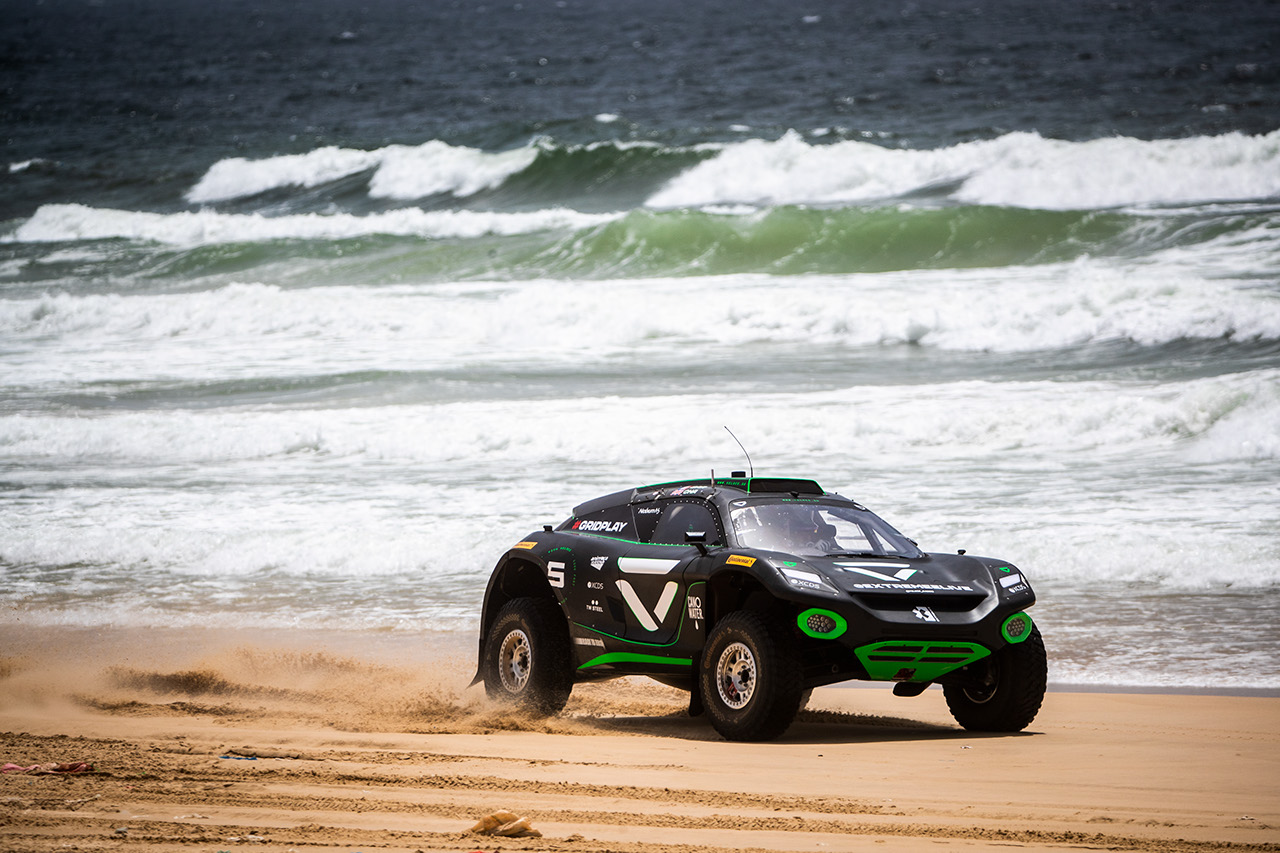 An Extreme E Race car driving along the beach in Senegal
An Extreme E Race car driving along the beach in Senegal
It depends on everyone
Mixed teams are an integral part of the Extreme E racing series. This, too, has a history at Continental, even though racing is markedly oriented toward men. In the 1920s, female racers were actively promoted. Hanni Köhler, the motorcycle queen of the 1920s, Susanne Koerner, who set off on a long-distance trip from Berlin to Birmingham by motorcycle in 1927, or the first car world traveler, Clärenore Stinnes – they all stand for the modern woman who navigates her own vehicle to wherever she wants to go. “That was absolutely daring at the time and had a strong emancipatory character,” says historian Fehlhaber. You could also say that they transformed the automobile into a mobility service provider. Catarina Silva also sees it that way: "We believe that diversity will always help us move forward."
 A vintage black and white photograph of Hanni Köhler
A vintage black and white photograph of Hanni Köhler
